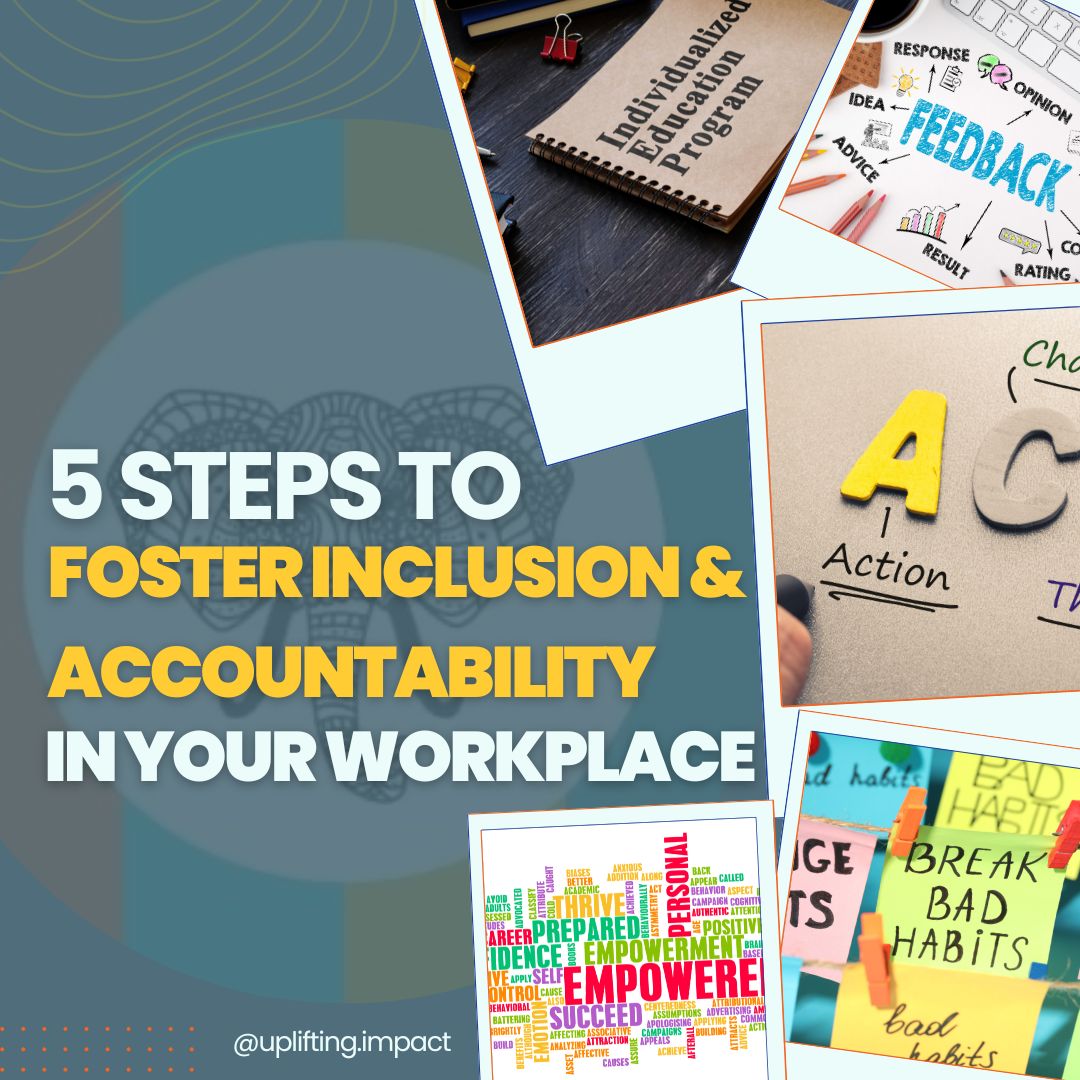5 Steps to Foster Inclusion & Accountability in Your Workplace

Accountability is an integral part of business. If someone does not finish an important project on time, that person might receive backlash from their team. If an employee does not submit travel expense reports, they will not be reimbursed. If a salesperson is rude to a customer, they will likely be disciplined or let go. But what accountability systems are in place for microaggressions, discrimination, or exclusionary behavior?
It is not enough to fulfill a “diversity quota” or engage in surface-level gestures that do not address systemic problems (hanging posters, acknowledging Black History Month in a company email). It’s crucial for DEI leaders and HR professionals to implement actionable strategies that help build a culture of inclusion.
Inclusion is not as straightforward as diversity. It is relatively easy to measure company demographics to ensure representation, but how do you gauge how welcomed and included your employees feel? How do you know whose voices are being heard, and who is often excluded from the conversation? How do you measure improvements in inclusionary behavior?
While these questions can be complicated, it is possible for company leaders to actively promote a culture of inclusivity and accountability. Start with the following five actions.
Educate
If your people do not have a clear understanding of what inclusion means and how to practice it, how will they know when they are engaging in exclusionary behaviors? It is essential to provide baseline education about diversity, equity, and inclusion principles. To do this, provide workshops, training sessions, and resources that help employees understand the importance of inclusion in the workplace. Encourage open discussions about biases, microaggressions, and ways to create a more inclusive environment. Keep in mind, education should be an ongoing offering. It is not an item on a checklist, but a constant fixture that evolves along with the company culture.
Invite Feedback
The best way to build an understanding of the current state of the company is to invite feedback. Talk to your people often (either one-on-one or in a group setting—whichever is more appropriate), conduct regular surveys, and provide anonymous channels for feedback. By creating safe spaces for employees to share their experiences and perspectives, company leaders can gain valuable insights into any pervasive issues, opportunities for improvement, or the effectiveness of current initiatives.
Act on Feedback
Gathering feedback is a great first step, but it is equally important to act on that feedback. Implement changes based on insights received from employees to address any issues identified or to improve the overall inclusivity of the company culture. This could involve policy adjustments, organizational changes, or additional training programs. By taking tangible actions in response to feedback, DEI leaders and HR professionals can demonstrate their commitment to fostering a truly inclusive work environment where every voice is valued and heard.
Discipline Bad Behavior
Just as employees must be held accountable for substandard work, a lapse in ethics, or unprofessional conduct, the same level of accountability should be applied to behaviors that undermine inclusion and respect in the workplace. Company leaders must establish clear guidelines on expected behavior and swiftly address any incidents of discrimination, harassment, or exclusion. Creating a culture that does not tolerate such behavior sends a strong message to employees about the values of the organization and reinforces the importance of fostering an inclusive environment for all.
Empower
In an organization where inclusion is prioritized, people should feel comfortable speaking out when they witness or experience exclusionary behavior. Empower employees to be allies and advocates for one another by fostering a culture that values speaking up against discrimination and supporting individuals who may feel marginalized. Provide resources and support systems for employees to report incidents, seek guidance, and receive assistance when addressing issues related to inclusion and diversity. Empowering individuals to take action is a powerful way to create a more supportive and inclusive work environment for all.
By prioritizing inclusion and implementing intentional strategies, organizational leaders can champion a culture that nurtures diversity, equity, and inclusion within the workplace. It is essential to move beyond superficial initiatives and quotas and focus on creating meaningful and lasting change—change that ultimately builds a workplace culture that welcomes and uplifts all voices.
Continuing Your Journey
Want to give your team some actionable next steps? Let's put it into practice by bring Actions Speak Louder to your company....Join us as we delve into the insightful world of workplace inclusion with Deanna Singh, author of "Actions Speak Louder: A Step-by-Step Guide to Becoming an Inclusive Workplace." This experience offers practical strategies and actionable steps to foster an inclusive culture within your organization!


